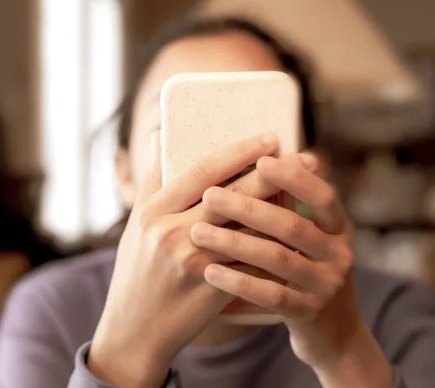
It all started less than 20 years ago with MySpace in 2006, a radical change to our relationship with technology and culture as a whole. With the introduction of smartphones and cellular data, we moved from scrolling on a desktop and waiting 20 minutes for SIMS to download on the computer, to social media as a strong tool for businesses that is often incorporated into our professional lives, gaming apps as a cornerstone for entertainment, and our phones as the hub for news and connecting with friends and family. As technology continues to advance, the connection and necessity we feel for our smartphones becomes stronger and stronger, and it has impacted our lives in more ways than we may have initially realized.
I recently watched the film The Social Dilemma on Netflix, where leading experts in technology outline how “persuasive design techniques” of social media prey on our natural cognitive instincts to jump into instant gratification loops that allow us to “zone out”. Some of the statistics are staggering. For example, Reviews.org shared from a recent study of adults 18+ that people look at their smartphones an average of 262 times per day and the average American will spend 44 days on their smartphone this year. However, even as we read these statistics or watch that Netflix documentary (consuming more information on the topic) it doesn’t really stop us from changing our relationship with our phone.
Ask Yourself These Questions:
- Do I intend to go on social media for something specific, and then realize later that I have spent most of my time watching videos, photos, memes or humor that I wasn’t intending to, and that weren’t related to what I intend to accomplish in life?
- Do I intend to just briefly check my Facebook or Instagram feed and then look up to discover hours have passed?
- Do I use streaming video as a way to avoid other activities, completing my to-do list, or doing other things I usually love to do?
If the answer to all of these questions were “yes”, then social media is impacting your life in more ways than you may realize. If this feels like something you want to change for yourself, “getting that time back” is an important first step. However, it’s also important to recognize that you didn’t get to this place all on your own, this was by design. That will help you recognize some of the obstacles we face when trying to create new patterns of behavior that will better serve us.
Next, ask yourself a few more questions – because while we definitely fit these statistics of what feels like media overuse in our lives, just as the algorithms have been incredibly personalized to us, resisting them also has to be incredibly personalized:
- Why am I on these individual apps?
- Are they giving me access to something that I cannot find elsewhere?
- Do I need to engage them for work?
- Are they integral to my social life?
These next questions can help us understand where our limits and boundaries exist, and enable us to personalize strategies that can work to limit our use of them.
- When am I using social media the most throughout my day?
- What might I be avoiding when I reach for them?
- What am I searching for?
- What have I gained from using them?
- What have I lost?
This can help us understand when certain patterns are emerging. For example, I was most active right when I woke up and before I went to bed, and it was partly to wake up and unwind. I was trying to preoccupy my mind from worrying about the day’s tasks or what I needed to do tomorrow. However, I also used media to connect me with new resources and engage with some of my communities during the day as well.
Once we gain more insight into our personal relationship with social media and technologies and when and how we use it, we can try some new strategies. Some will work and others may not. Our primary goal is to be curious and not judgmental of ourselves throughout this process.
Here are some strategies to help you limit your use of social media and technology:
- Chose three social media apps that are most important to you and delete the rest
- Place time limits on certain apps (can be found in settings for most smartphones)
- Create a boundary of not using your phone 30 minutes before going to bed and after waking up
- Invest in an alarm clock to use instead of my phone
- Unfollow or utilize in-app features that limit certain content
- Develop a new hobby that provides stimulation to our brain and if possible occupies your hands (ie. puzzles, coloring, knitting, painting, drawing, playing a card game, writing etc.)
- Leave your phone in another room when trying to achieve a particular task
- Disable notifications for all unnecessary apps
- Disable autoplay from streaming services or other video platforms
- Use social media solely on a desktop computer
- Create designated phone, tv, or screen spaces (e.g. remove tv from the bedroom, only use social media away from work desk, etc.)
- Eat meals away from screens
- Find a buddy to check in around specific goals
Breaking away from technology that has done an excellent job at keeping us hooked is challenging, and creating new patterns can take time. Try these strategies when it feels most challenging to do so, or when you’ve “slipped up” in one of your boundaries. Both scenarios can shed important light on what might work for you specifically. It’s also important to remain non-judgmental of yourself, and to continue to adapt new strategies and develop new habits that honor what’s most important to you and how you truly want to spend your time.
____________________________________________________
This blog is authored by Julia Plomer, MEd, LPC. IntraSpectrum Counseling is Chicago’s leading psychotherapy practice dedicated to the LGBTQ+ community, and we strive to provide the highest quality mental health care for multicultural, kink, polyamorous, and intersectional issues. For anyone needing affirming and validating support, please click here or contact us at help@intraspectrum-chicago.com.





 Today, July 26th, is National Disability Independence Day. This annual commemoration marks the day in 1990 when the Americans with Disabilities Act (ADA) was signed into law. The ADA enshrined several crucial civil rights protections for individuals with disabilities, but it still falls short of its intended goals after over 30 years on the books.
Today, July 26th, is National Disability Independence Day. This annual commemoration marks the day in 1990 when the Americans with Disabilities Act (ADA) was signed into law. The ADA enshrined several crucial civil rights protections for individuals with disabilities, but it still falls short of its intended goals after over 30 years on the books.